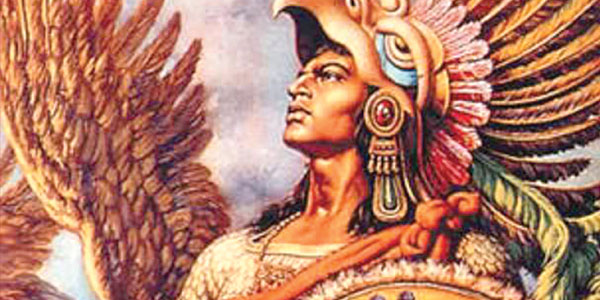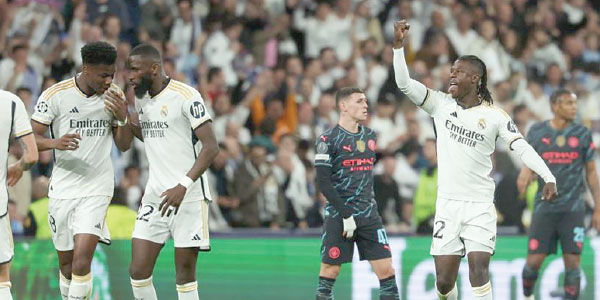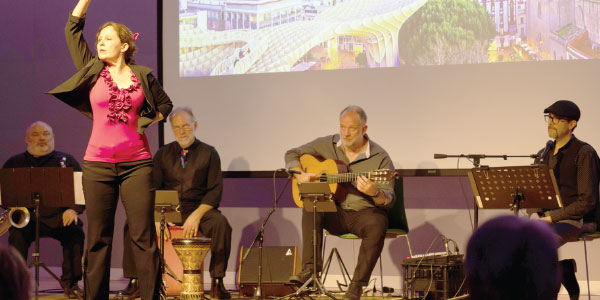
By Jorge Ramos
Five centuries ago, at a spot that is today marked by the intersection of two major streets in downtown Mexico City, the Aztec ruler Montezuma II and the Spanish conquistador Hernán Cortés met for the very first time. The extraordinary encounter between the New World and the Old took place on Nov. 8, 1519, and its consequences are still being felt today.
The details of what actually happened during that historic meeting are still somewhat controversial. Two slightly different versions of the surrounding events have emerged from the historical record.
As soon as Montezuma heard that a foreign expedition had landed on the coast of the Gulf of Mexico, he did everything he could to prevent it from reaching Tenochtitlán, the grand capital of the Aztec Empire built on the site of what is now modern-day Mexico City. His efforts failed. In fact, he ended up ensuring the opposite of the outcome he had desired: The gifts he had sent the Spaniards only served to spark their curiosity.
Cortés, then 34 years old, arrived in Tenochtitlán with hundreds of soldiers, a little more than a dozen horses, guns and the support of about 1,000 Totonac and Tlaxcaltec natives, traditional enemies of the Aztecs who had joined up with the Spanish expeditionary forces.
The Spaniards were overwhelmed at the sight of Tenochtitlán, with its canals and central market. It was far bigger than any European city at the time. “We were in complete awe,” wrote Bernal Díaz del Castillo in his “True Story of the Conquest of New Spain.”
This is how Cortés recalled his encounter with Montezuma in a letter sent to the Holy Roman Emperor, Charles V, almost a year later: “Señor Mutezuma came to welcome us, with some 200 men, all of them barefoot and dressed up … in rich clothing according to their uses. … Mutezuma was in the middle of the street … and there he took my hand and led me to a huge room … where he invited me to sit on a richly decorated platform.”
However, in his recent book “Hernán Cortés: Más Allá de la Leyenda,” the anthropologist and historian Christian Duverger describes a more strained meeting: “Great Motecuzoma descends from his luxurious chair carried on the shoulders of his men; he’s surrounded by 200 gentlemen. The entire government of Mexico is there. Cortés gets off the horse, takes off his helmet and tries to hug the emperor.
“Motecuzoma’s security detail stops him. Keeping a few meters between each other, they exchange gifts, valuable necklaces. Without uttering a single word, in a tense atmosphere that can be easily pictured, Motecuzoma leads the Spaniards to a huge house near the great temple, the palace of former Emperor Axayácatl.”
At the palace, Cortés and Montezuma engage in a long conversation, assisted by two interpreters: Gerónimo de Aguilar, a Spanish priest who after being shipwrecked had spent several years with the Mayan people, and Malintzin, the daughter of a Nahua chief, who had been given to Cortés as a slave before his arrival in Tenochtitlán. This young woman, also known as La Malinche, translated from the Nahuatl tongue into Mayan, while Aguilar translated from Mayan into Spanish, and then the pattern was reversed. This is how Montezuma and Cortés communicated.
In his letter to Charles, Cortés reported that Montezuma had said: “Here you see me who am in flesh and bone just like you and every other person … mortal, palpable. … See how you have been lied to. The truth is that I have a few things made of gold, passed on by my grandparents. Everything I have is yours any time you want it.”
Montezuma was eventually kidnapped by the Spanish, and was killed soon after (either stoned to death by his own people or murdered by his captors; accounts vary). After many battles, Tenochtitlán fell to the Spanish in August 1521.
The conquest of Mexico was brutal. Millions of native inhabitants died violently, suffered from terrible illnesses or were enslaved.
Despite this tragic history, it’s nearly impossible to say which heritage — that of the indigenous people or that of the Spanish — has proved to be more influential for Mexicans now living in the 21st century. We simply are who we are; we were born out of conflict.
History often seems to evolve without logic or direction. There’s no way these two men could have imagined how far-reaching the consequences of their encounter would be.
And yet, here we are. Many of us on this side of the world are here because of that meeting between Cortés and Montezuma 500 years ago.
At the corner of República de El Salvador and José María Pino Suárez streets in downtown Mexico City is a mosaic mural, proclaiming the spot where that singular event took place.
The moment of our birth.
___________________________________________________________________________________________
El Encuentro Hace 500 Años
Hace cinco siglos— en lo que hoy es la esquina de dos calles del centro histórico de la ciudad de México — se encontraron por primera vez el tlatoani azteca, Moctezuma II, y el conquistador español, Hernán Cortés. Este encuentro, uno de los más extraordinarios de la historia, ocurrió el 8 de noviembre de 1519 y sus repercusiones aún las sentimos hoy.
Sólo la descripción de ese histórico encuentro es motivo de controversia. Hay, de hecho, dos visiones — igualmente poderosas y vitales — que chocan y que se mezclan.
Tenochtitlán impactó a los españoles con sus canales y su mercado central. Era, además, mucho más grande que cualquier ciudad europea de la época. “Nos quedamos admirados”, escribió Bernal Díaz del Castillo en su “Historia Verdadera de la Conquista de la Nueva España”.
Desde que Moctezuma II se enteró de la llegada de una expedición a las costas del golfo de México, hizo todo lo posible para evitar que se acercaran al centro del país. Pero no lo logró. De hecho, generó el efecto contrario. Los regalos que les envió a los españoles despertaron más su curiosidad.
Cortés, de 34 años de edad, llegó a Tenochtitlan con unos cientos de soldados, más de una docena de caballos, armas y el apoyo de alrededor de mil indígenas totonacas y tlaxcaltecas (enemigos tradicionales de los aztecas y que se habían sumado a la fuerza expedicionaria).
Así es como Cortés lo recordó en su segunda carta de relación que envió casi un año después al emperador Carlos V: “Nos salió a recibir aquel señor Mutezuma con hasta doscientos señores, todos descalzos y vestidos de otra librea o manera de ropa asimismo bien rica a su uso. … Mutezuma venía por medio de la calle … y ahí me tomó de la mano y me llevó a una gran sala que estaba frontera del patio por donde entramos, y allí me hizo sentar en un estrado muy rico”.
Sin embargo, el antropólogo e historiador Christian Duverger en su libro “Hernán Cortés: Más Allá de la Leyenda” resume así el encuentro con Moctezuma: “Motecuzoma, el gran Motecuzoma, desciende de su lujosa silla de manos. Doscientos señores lo rodean. Todo el gobierno de México está allí. Cortés desciende del caballo, se descubre la cabeza y se dispone a abrazar al emperador. El servicio de orden de Motecuzoma lo rechaza. A pocos metros uno del otro, intercambian regalos, collares valiosos. Sin decir una palabra, en la tensión que es fácil imaginar, Motecuzoma lleva a los españoles a una gran casa cerca del gran templo, al palacio del antiguo emperador Axayácatl”.
Ya ahí en el palacio comenzó una larga y compleja conversación entre Cortés y Moctezuma con la ayuda de dos intérpretes: el español Gerónimo de Aguilar, quien tras un naufragio pasó varios años entre los mayas, y Malintzin, hija de un jefe nahua, con una infancia muy difícil y entregada a Cortés antes de llegar a Tenochtitlán. La también conocida como Malinche traducía del náhuatl al maya, y Gerónimo del maya al español. Y viceversa. Así fue como Moctezuma II y Cortés se comunicaban.
Por eso Cortés, en su carta al rey, le atribuyó a Moctezuma II estas palabras: “A mí veisme aquí que soy de carne y hueso como vos y como cada uno, y que soy mortal y palpable. … Ved cómo os han mentido. Verdad es que yo tengo algunas cosas de oro que me han quedado de mis abuelos. Todo lo que yo tuviere tenéis cada vez que vos lo quisiéredes”.
Moctezuma II eventualmente fue secuestrado por los españoles, murió
(apedreado por su gente o asesinado por sus captores) y, tras una larga campaña bélica, Tenochtitlan cayó en agosto de 1521.
La conquista fue brutal. Millones de indígenas murieron violentamente, por enfermedades y en esclavitud. Pero es inútil discutir si la influencia indígena o la española tiene más peso en nosotros en este siglo XXI. Somos lo que somos — resultado de un conflicto.
La historia, a veces, se va armando sin lógica o dirección. Y es imposible que estos dos hombres se hubieran imaginado la tremendas consecuencias que su encuentro estaba creando.
Pero aquí estamos. Muchos de nosotros — de este lado del mundo — somos producto del desenlace de ese reunión entre Cortés y Moctezuma Xocoyotzin hace 500 años.
En la esquina de las calles República de
El Salvador y Pino Suárez en el centro de Ciudad de México hay un mural mosaico recordando el evento
De hay venimos .









